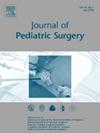Management, Trends, and Recommendations for Intra-abdominal Lymphatic Malformations: A Single-Center Retrospective Review
IF 2.4
2区 医学
Q1 PEDIATRICS
引用次数: 0
Abstract
Background
Intra-abdominal lymphatic malformations (ILM) are vascular anomalies that arise from the mesentery, omentum, or retroperitoneum. These may present with abdominal symptoms or may be incidentally discovered on imaging. There is not a clear consensus on management or prognosis. The aim of this study is to describe and characterize common presentations, treatments, and outcomes.
Methods
A retrospective chart review was performed of non-solid organ ILM followed in tertiary vascular anomalies clinic. Descriptive statistics were used to analyze patient demographics, symptoms, treatment, treatment response, and complications.
Results
Fifty-six patients with ILM were identified. Thirty-seven percent had other associated lymphatic or vascular malformations including PIK3CA-related Overgrowth Syndrome (PROS), Generalized Lymphatic Anomaly, and Capillary Venous Lymphatic Malformation. Most patients present with abdominal symptoms (pain = 32 %, obstruction = 9 %, distention = 7 %). Symptomatic patients were treated with sirolimus (n = 22, 39 %), percutaneous drainage (n = 3, 5 %), sclerotherapy (n = 15, 27 %), and or surgery (up front surgery, n = 15, 27 %). Of those who underwent sclerotherapy, 67 % had resolution of symptoms while only 5 required subsequent surgery for persistent symptoms. Surgery was utilized for patients presenting with acute bowel obstruction and when sclerotherapy failed to resolve symptoms. Of those who underwent surgery, 32 % required bowel resection (n = 7) and one patient required an ostomy.
Conclusion
Most patients with ILM present with abdominal symptoms and have other associated vascular anomalies. Interventional procedures, such as sclerotherapy, and medical therapy with sirolimus are safe and effective and should be considered first-line therapies. Surgical resection should be reserved for failure of less invasive therapies and for acute bowel obstruction.
Type of Study
Treatment Study.
Level of Evidence
Level III.
求助全文
约1分钟内获得全文
求助全文
来源期刊
CiteScore
1.10
自引率
12.50%
发文量
569
审稿时长
38 days
期刊介绍:
The journal presents original contributions as well as a complete international abstracts section and other special departments to provide the most current source of information and references in pediatric surgery. The journal is based on the need to improve the surgical care of infants and children, not only through advances in physiology, pathology and surgical techniques, but also by attention to the unique emotional and physical needs of the young patient.

 求助内容:
求助内容: 应助结果提醒方式:
应助结果提醒方式:


